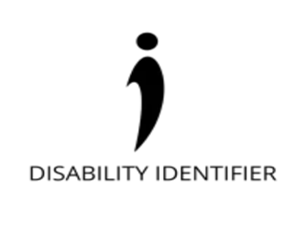Retrieved from https://dmv.colorado.gov/disability-identifier-for-driver-license/permit/identification-card
As the nation reeled at the death of George Floyd at the hands of police officers in 2020, the little-known death of young man during a 2019 interaction with Colorado police began to come into the public’s awareness. Elijah McClain, a sensitive autistic man, was a massage therapist and a self-taught musician who loved to play music for shelter animals as he believed that they found it comforting. Elijah was a young African American man. When approached by police on August 24, 2019, he stated “I am an introvert, please respect the boundaries that I am speaking.” (BBC News, 2021) Elijah had committed no crime but despite his appropriate request he was physically restrained by police with a now banned chokehold and injected with an overdose of ketamine by paramedics. As a result of the intervention, Elijah died. Had Elijah had the ability to inform the police of his disability would the interaction have ended differently?
Retrieved from https://www.bbc.com/news/world-us-canada-56134565
To effectively respond to calls involving the disabled, law enforcement needs to be knowledgeable about disabilities along with appropriate disability specific interventions. A 2018 study found that out of officers surveyed, 72.2% had not received autism training (Gardner et al.,2018). A lack of autism or general disability awareness by law enforcement officers has been linked with increased arrest rates and death at the hands of the police. By the age of 28, the disabled have a greater likelihood to be arrested as compared to the nondisabled, with disabled African Americans having an even greater possibility (McCauley, 2017). One third of all police related deaths are disabled individuals. Individuals with neurodevelopmental disabilities and/or mental health disabilities represent the majority of deaths in this group (Diamond & Hogue, 2022).
What happens if the disability is an invisible disability?
An invisible disability is a disability that is not visible from the outside and takes the form of a neurological, mental, or physical disability that is not easily identified from first appearance or interaction. Individuals with an invisible disability can appear abled. For example, a deaf person walking down the street with their back to police may not hear a directive and the behavior can be interpreted as noncompliance. In Elijah’s case, he was wearing a ski mask to stay warm while listening to his headphones. He was waving his arms around, which his family believes was him dancing to his music. When Elijah was non-responsive to the police coupled with what the police believed to be erratic behavior (i.e., waving his arm), Elijah was placed in a restraint (BBC News, 2021). What if there had been a way to Elijah to identify his disability to police by showing them his license?
At this time there are two states that provide their residents the ability to have a disability symbol placed on their license or ID card. Alaska Statutes 18.65.310(m) and 28.15.111(d) were passed on May 15, 2017, which allowed individuals to designate on the driver’s license or ID card that they have a disability, visible or invisible (Invisible Disability Designator on an ID Card or Driver’s License, n.d.). Four years later on July 1, 2022, Colorado state instituted an act that “With the signing of HB 21-1014 (Disability Symbol Identification Document Act), Coloradans who might not be able to effectively communicate with first responders due to a cognitive, neurological, mental health, sensory needs, chronic illness, chronic pain and/or physical disability can choose to add a disability symbol identifier to their driver license or ID card to assist them when interacting with the police on their own” (Disability Identifier for Driver License/Permit/Identification Card, n.d.). It is important to note that those who elect to have a disability symbol placed on their license or ID card can have their state remove the symbol later at no cost to them.
The disability symbol comes with both advantages and disadvantages. In a time of crisis, an individual can provide first responders with an ID that identifies he/she/they as an individual with a disability. This allows officers the opportunity to reframe the interaction such that they are not dealing with criminal activity but assisting someone with a disability. The best-case scenario is that first responders are knowledgeable of the disability and appropriate interventions. However, having an ID with disability symbol does not ensure direct communication with law enforcement. In a time of crisis, would one be able to be of sound mind to provide the responders with an ID? What if the ID is left at home, does the individual now run the risk of not being treated with respect and dignity because of being unable to legally identify themselves as an individual with a disability? It is important to take into account that law enforcement are not the only ones that will see the disability status on the ID. An individual’s disability status will be visible to anyone who looks at ID (e.g., employer, academic institution, bank, creditor, etc.). Research into whether an invisible disability symbol on a disabled person’s ID correlates with decrease in arrests or death at the hands of law enforcement will be needed to assess the effectiveness of the invisible disability symbol. As Alaska’s and Colorado’s laws are new, it will be several years before this information may be available.
References:
Invisible Disability Designator on an ID Card or Driver’s License. (n.d.). Retrieved from http://doa.alaska.gov/dmv/akol/designator.htm
Disability Identifier for Driver License/Permit/Identification Card. (n.d.). Retrieved from https://dmv.colorado.gov/disability-identifier-for-driver-license/permit/identification-card
Diamond, L. L., & Hogue, L. B. (2022). Law Enforcement Officers: A Call for Training and Awareness of Disabilities. Journal of Disability Policy Studies.
Elijah McClain: ‘No legal basis for detention that led to death. (2021, February 2021). BBC News. https://www.bbc.com/news/world-us-canada-56134565
Gardner, L., Campbell, J.M. & Westdal, J. Brief Report: Descriptive Analysis of Law Enforcement Officers’ Experiences with and Knowledge of Autism. J Autism Dev Disord 49, 1278–1283 (2019). https://doi.org/10.1007/s10803-018-3794-4
McCauley, E.J. (2017). The cumulative probability of arrest by age 28 years in the United States by disability status, race/ethnicity, and gender. American Journal of Public Health, 107(12), 1997-1981. https://ajph.aphapublications.org/doi/pdf/10.2105/AJPH.2017.304095?casa_token=w2LCtEb_r4QAAAAA:nSWVe5ge1CI-iGMcjBTN5aEmM2jIV2L0dLlhQctrbv7tO3RfNLVehUENfepeZQnCFDSSdmSBzsWU









